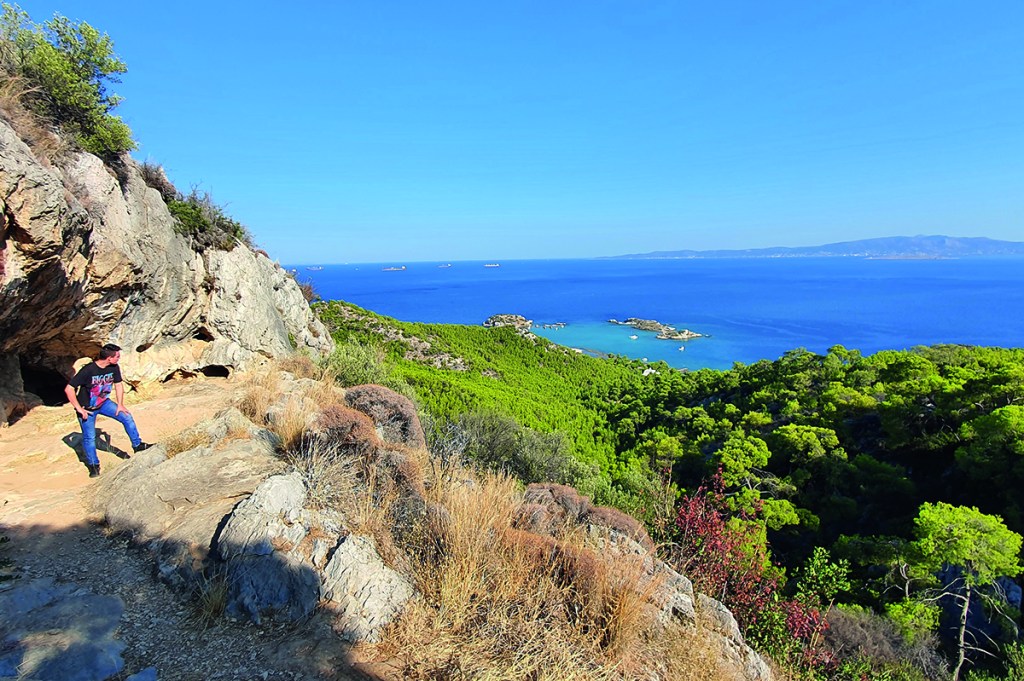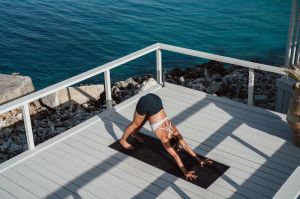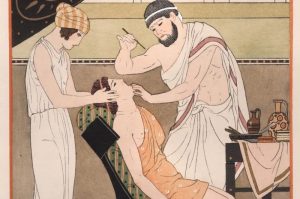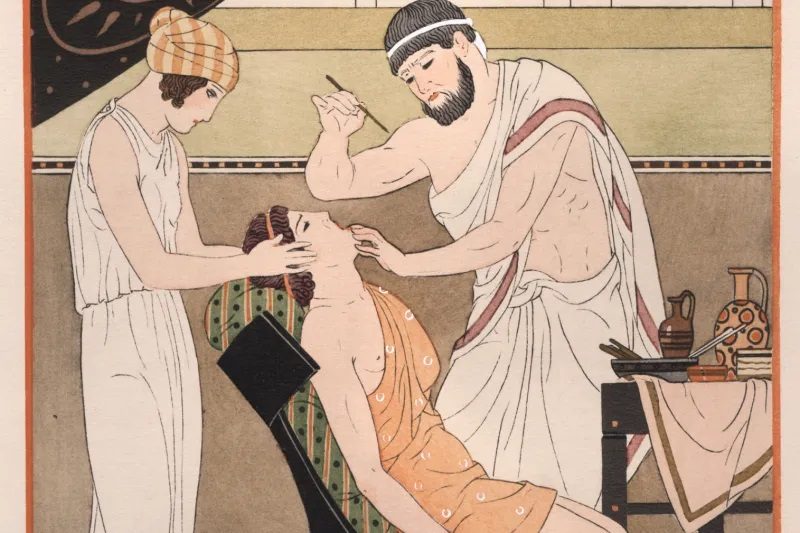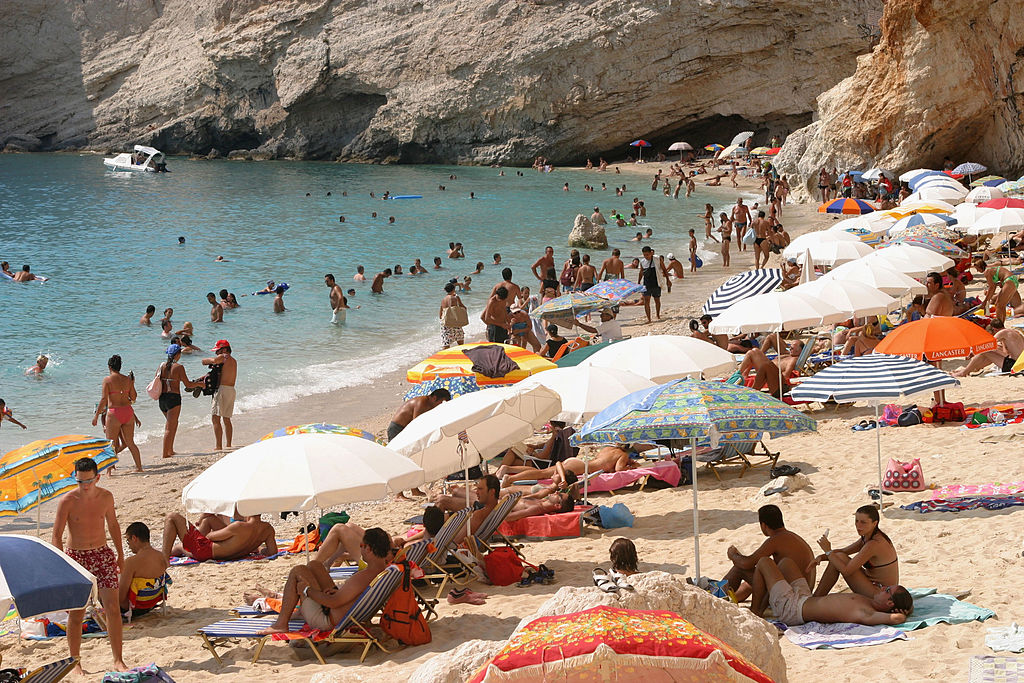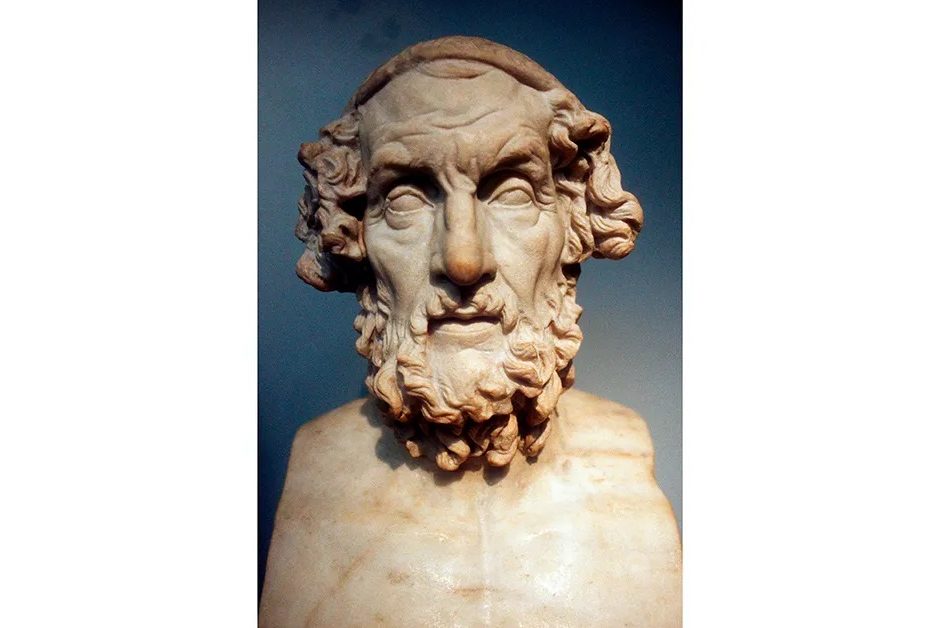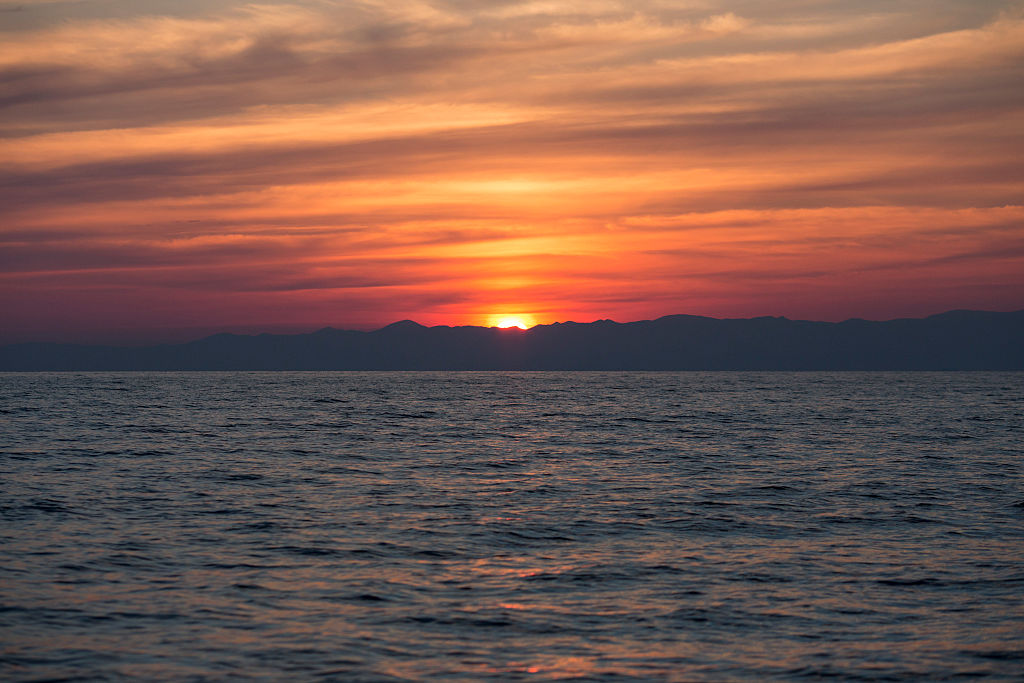The 2,500th anniversary of the Battle of Salamis — the decisive naval battle of 480 BC in which the Greek fleet, vastly outnumbered, devastated the invading Persian armada in the straits near Athens — fell on September 29. So we went to take another look at the nautical objects in the Piraeus Archaeological Museum. It is not exactly a small museum — it is housed in a high-ceilinged, two-story building in the port of Piraeus, next to the remains of a Hellenistic theater — but it receives few visitors. Even Piraeus taxi drivers don’t always know where to find it.
Tourists usually give Piraeus a miss; they tend to be ‘museumed-out’ from the big museums up the road in Athens. They come to Piraeus — technically, historically and in actuality a different city — to hop on and off ferry boats to the islands. But Piraeus is its own place with its own history.
Inhabited since prehistoric times, Piraeus became Athens’s official port in the 5th century BC and was included in Athens’s famed ‘long walls’. The Venetians later knew it as the Porto Leon, the ‘Lion Port’, after the massive, 4th-century BC lion sculpture that they carried to Venice and installed outside the Arsenale. In the euphemistically named ‘population exchange’ with Turkey (1922- 1924), over a million ethnic Greeks fled from Asia minor to Greece, and Piraeus became a tent-city; an event eerily echoed in 2016, when thousands of refugees from Syria and elsewhere camped in the port. Now, Piraeus symbolizes in some ways Greece’s place in the new Silk Road: since 2016, China’s Cosco has owned a majority stake in the port.
The museum’s finds are mostly from Piraeus and neighboring areas, including the nearby island of Salamis and the coast of Varkiza. Even under non-corona conditions it isn’t busy, but now it is utterly empty, perched in the middle of a broad, deserted boulevard that bespeaks a time when Piraeus had aspirations to grandeur.
Donning our mandatory masks, we enter the sleepy building, cool and quiet on a hot dusty day; the fellow manning the ticket booth bestirs himself to issue tickets, as if interrupted from his siesta. Stickers on the floor remind us to keep our distance, but there isn’t anyone to socially distance from. The museum, seemingly aware of its off-the-beaten-path reputation, offers neither a café nor a shop. The guidebook is only sold in Greek, though we can buy an English edition online.
The museum reminds us that Classical Athens is not the end-all be-all of Greek history, and that antiquity didn’t end in the 4th century BC. Piraeus was always a multicultural, multiethnic and polyglot port town, as it is today, bustling with European tourists, Chinese entrepreneurs, refugees from Syria, Afghanistan, Iraq and Somalia, Roma people and merchant seamen from all over the globe. Some of my favorite objects in the museum are funeral stelae and even a mausoleum erected for prosperous metics (legal immigrants who did not have citizenship: ancient Green Card holders, in effect), including a lady, Eirini from Byzantium, whose inscription is written in both Greek and, startlingly, Phoenician, perhaps the language of her husband.
In school, we may learn about the 12 gods of Olympus, but that is a simplification of Greek religion. The Greeks worshipped a much broader range of deities, some imported, some stubbornly local. The museum contains an altar to Mithras, the Indo-Persian god that the Roman army carried all over the empire, images of the Egyptian goddess Isis, and temple objects for Cybele, the ‘mother of the gods’ from Asia Minor.
I inspect a relief from the Piraeus Asclepion, an ancient healing center named after the legendary doctor Asclepius. A sick woman, accompanied by her worried family, is attended by Asclepius and, behind him, the deity Hygeia, a reminder that health was for the Greeks itself a kind of god. Mass-produced reproductions of the relief are widely displayed in Greek doctors’ offices. Piraeus, it is worth noting, was the point of entry for the notorious plague that afflicted Athens in 480 BC.
Other objects remind me of the vicissitudes of time. One room is filled with a cargo of beautiful marble carvings from a shipwreck destined for Italy in the 2nd century AD, and discovered in 1930. Huge sections of the torso and head of the emperor Hadrian stand here, and a statue of the ill-fated Roman emperor Balbinus, who reigned for only three months in 238 AD, the ‘year of the six emperors’. You can tell which side of the statue lay sheltered on the seabed, and which was open to the insults of the sea: the back is deeply vermiculated, eroded by weather and the patient drilling of generations of sea creatures.
Upstairs are four of the finest bronzes from the ancient world. In general, bronze statues do not travel well through time, because they can be melted down for bullion or weapons in times of strife. They tend to survive into our own era only by being shipwrecked or buried. Here is a large bronze Athena, standing over seven and a half feet tall in her helmet, with glass eyes and a strangely stricken expression. A bronze Artemis boasts an intricate hairdo. Here is also probably the earliest Archaic style bronze kouros (a naked male figure), the elegant Piraeus Apollo.
These startling sculptures — you feel you are in a presence — were only discovered in 1959 in a rescue excavation at the port, where they seemed to have been stashed in an ancient storeroom. The theory is that they were stowed there for safekeeping during Sulla’s siege of Piraeus in 87 BC during the first Mithridatic War, and then somehow forgotten or abandoned.
This floor also contains some of my and my husband’s favorite museum objects anywhere: items from the grave of a poet, including a harp, musical instrument repair tools and a wax tablet for lyrics. I’ve even written a poem about it. My husband loves the chart in a life-size stone carving of various standard measurements based on proportions of the human body: the cubit, the hand, the span, the foot. You can compare your own personal cubit (length of the forearm) with the ancient measure.
This visit, the object that intrigues me most is one I haven’t noticed before: a small Hellenistic clay figurine of a woman squatting down and bathing herself. With her curves and her full, middle-aged breasts, she doesn’t appear to be a Classical goddess, but a real woman as observed by an ancient and anonymous sculptor, an unknown Rodin or Degas, perhaps. In a museum that includes a full-scale mausoleum and monumental bronzes, it’s a reminder that under-visited museums always have something tucked away, a new connection with the past, a new favorite thing to visit next time.
Here is also an ancient anchor, and the anthropomorphic ‘eye’ of a ship, and a bronze beak for tearing into enemy vessels, bringing our minds back to the nearby straits of Salamis. When the Persian fleet of Xerxes attacked in 480 BC, the oracle from Delphi had told the Athenians to take refuge in the safety of ‘wooden walls’. Some interpreted that as referring to the wooden walls around the Acropolis, but the Athenian politician and general Themistocles interpreted it as the wooden walls of Athens’s ships, its impressive fleet.
Our next family outing is to the island of Salamis itself. This involves driving through Piraeus, its fishing and boating tackle shops, shuttered travel agencies, office buildings of shipping companies, fish markets and old-time kafeneions full of ancient mariners, to the neighboring community of Perama (one of the poorest in the Athens area, largely inhabited by descendants of Greek refugees from the 1920s), where ferries push off round the clock for the Salaminan port of Paloukia, a mere 15 minutes away. The tickets are absurdly cheap: five of us, including my mother-in-law and the car, come to less than €10).
As far as the children are concerned, this is a more entertaining day trip than a museum, all out of doors, starting with a boat ride, and ending with a swim in the cove beneath the cave where, supposedly, Euripides, having rowed over from the mainland, wrote his plays. Standing across from the straits, we try to imagine the vastly superior Persian fleet getting drawn into the narrows, attempting to maneuver in the confusion of close quarters and damaging each other as the Aeginite fleet hove into view.
There is time for lunch at a seaside taverna and a mastic or pistachio ice cream, and a drive across the island, surprisingly green and well forested, to try to find the last surviving ‘witness’ of the battle, a 2,500-year-old olive tree that goes by the name of the Olive of Orsa, Orsa being in local lore a 17th-century maiden whose dowry the tree was when it was only a little over two millennia old.
We’re in luck: our waiter at lunch, a local lad, has heard of it, and sends us in the right general direction. But we would never have found it without being led there by a woman we ask on the way. There isn’t much of a marker, only some ropes around it and a small, hand-painted wooden sign in Greek. It seems almost a small grove of trees, as its middle trunk has essentially died off, leaving a circumference of sturdy trunks and shoots, themselves hundreds of years old. All around is a litter of shriveled olives from last season, evidence that the Olive of Orsa still produces olives in great profusion. We pocket some, thinking perhaps to plant a little history for the future.
This article is in The Spectator’s October 2020 US edition.



